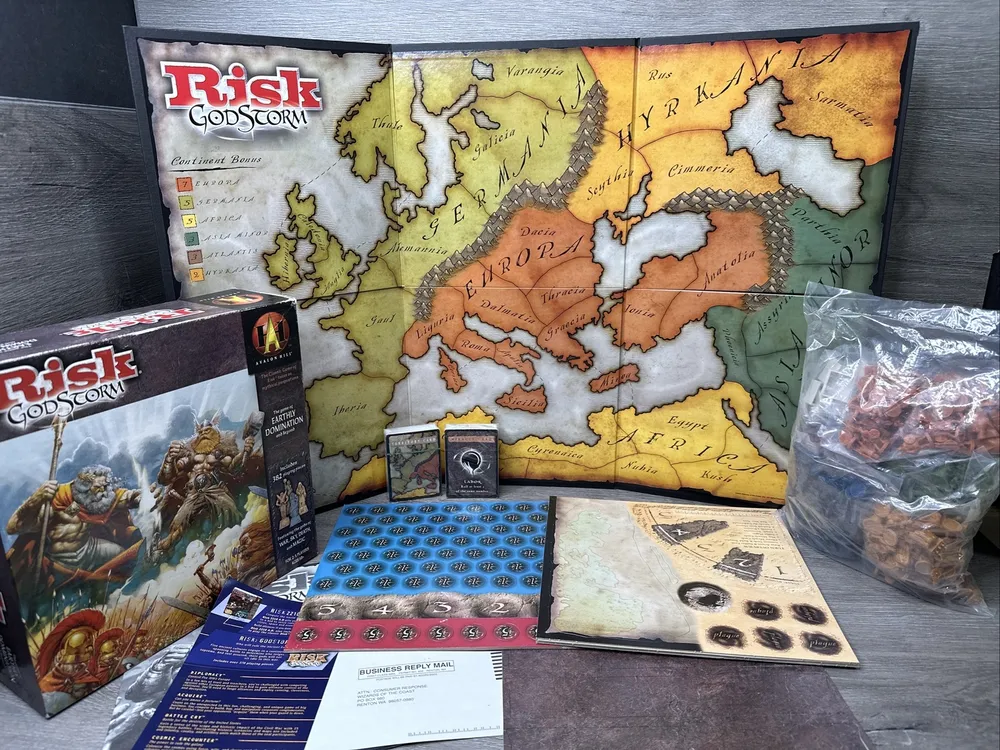Risk: Godstorm (2004)
Risk Godstorm
“Risk Godstorm” is a board game published by Avalon Hill and designed by Mike Selinker, Richard Baker, and Michael Donais. The game is set in the ancient world and involves the clash of cultures, including the Celts, Norse, Greeks, Egyptians, and Babylonians. Players invade territories, play miracle cards, sink Atlantis, and conquer the underworld, which is a significant addition to the Risk series as soldiers do not leave the game when they are killed but instead go to their heavens and then embark to take over the underworld.
Why is Risk Godstorm Popular?
Risk Godstorm is a popular and significant board game because it combines the classic Risk gameplay with a mythological theme, making it appealing to fans of both strategy games and mythology enthusiasts. The game’s unique mechanics, such as the underworld conquest, add a new dimension to the Risk experience, making it a standout in the series.
Game Components of Risk: Godstorm
How To Setup Risk: Godstorm
To set up the game, players start by selecting a color to represent their race. The main board and the underworld board are placed in the center and an accessible location, respectively. Four decks of miracle cards are shuffled and placed within reach. A deck of territory cards is shuffled, and the top four cards are revealed, placing plague markers on the corresponding territories. Players are dealt territory cards and given starting armies (35 for a three-player game). Each player places one army on each territory they have a corresponding card for, then takes turns placing three armies at a time on their territories. Players also place one temple and their god of War on their controlled territories. Each player receives an initial quantity of faith chips (31).
Gameplay Mechanics and Game Objective
Player Experience
Risk: Godstorm offers a dynamic and engaging experience, combining the strategic depth of Risk with the mythological intrigue of ancient gods. The game is played over five epochs, ensuring it does not drag on like some other Risk versions. Players must balance army placement, god powers, and miracle card usage to achieve victory. The underworld feature adds an extra layer of strategy and fun, allowing defeated armies to still influence the game outcome.
Pros
Cons
Personal Thoughts on Risk: Godstorm
Risk: Godstorm is ideal for fans of the original Risk and those who enjoy strategy games with a mythological twist. While it does not replace the classic, it stands well on its own and offers a fresher, more engaging experience. The game’s complexity and unique features make it appealing to players looking for more depth in their strategy games. However, it may not be the best choice for casual players due to its steep learning curve and the potential for uneven gameplay balance.
We are supported by our audience. When you purchase through links on our site, we may earn an affiliate commission, at no extra cost for you. Learn more.

